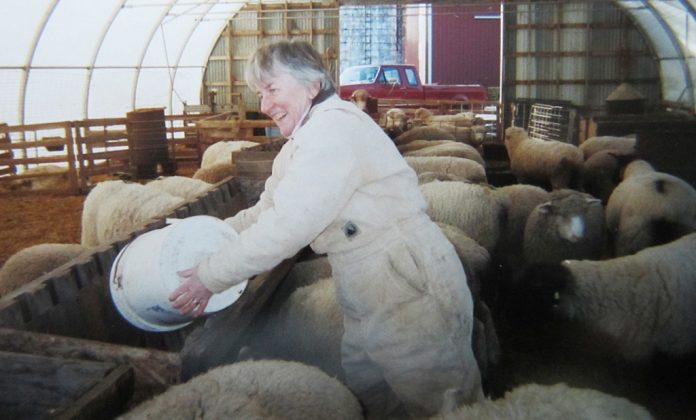
It was the late 1960s. Cynthia Koonce, a 30-something born in western Pennsylvania — who’d lived in the Midwest, Colorado and southern California, before landing in the Baltimore-Washington, D.C., area — wanted a deeper connection to the land.
She wanted roots. She was tired of being an itinerant. The daughter of a single mother, she had a somewhat transient childhood. She went to college in Illinois for a time, and then worked on a dude ranch in the Colorado mountains. She moved to southern California and was an Air Force wife, moving here and there, before she and her first husband divorced.
Now living on the outskirts of the nation’s capital, Cynthia and her new husband, Duane Miller, wanted to find acreage to call their own. She had saved money for the down payment. With it, they went in on a piece of land with another couple, later buying out the others to own it outright.
Roots
When we launched the Growing Farmers series, I wrote that many of the themes resonated. Here’s why. Cynthia and Duane purchased 24 rolling acres, on a two-lane road, in West Friendship, Maryland, with a former sharecroppers’ house and a barn. It’s where I spent my earliest years growing up, exploring the woods and clambering through the old pig barn that no longer housed pigs, but made a great setting for make-believe stories.
My family lived on that 24-acre farm for more than 20 years before the county’s exponential growth inspired them to look northwest, to eastern Ohio and western Pennsylvania, eventually finding land in Columbiana County, Ohio. Not far from where Mom was born, it was also close to Dad’s roots as well, in Youngstown, Ohio.
Early days
Mom tells stories of their early years farming with bemusement. My dad dreamed of being a dairy farmer, and bought a Holstein-Angus cross cow. Mom still vividly remembers drowning in milk and scrambling to make butter and buttermilk and other products, so it wouldn’t go to waste.
My dad did not, in fact, become a dairy farmer. Mom isn’t sure when they sold the cows, but she does remember that at some point, they stopped drowning in milk. They had a 1-acre garden, and, originally, my dad planted a 75 foot long row of zucchini. We all know what happens when you plant zucchini. It multiplies like the loaves and fishes.
New beginnings
They got into sheep, making good money on the fine wool they produced. One year, they went to a tiny, local sheep and wool festival. That festival was the opportunity they needed — not only did they make connections with the state’s sheep breeders’ association but, also, the committee organizing the Maryland Sheep and Wool Festival. The festival still runs today, and is one of the largest of its kind in the country. We lived a few minutes away; it was a rite of passage for me.
In many ways, my parents had found the sweet spot, despite missteps as they learned how to be farmers. They had land, and they had community to inspire them.
What if?
Almost exactly a year ago, we published a column by Rachel Wagoner, in the wake of the George Floyd murder. Floyd, a Black man, was held down and choked to death. Derek Chauvin, a white man and a former police officer who killed Floyd, has since been convicted of the crime. Wagoner wrote about white privilege and what it looks like in rural western Pennsylvania. Some readers weren’t fans. Others were. I’ve thought a lot about it over the past year. I think a lot about how my family got into farming and how others struggle to find ways.
I recently had a long chat with Mom about how my parents got started. Things seemed to line up well for them, just when they needed to. It’s not easy to play the “what if?” game between the past and present days. As we kicked around the current situation with farm land prices and availability though — especially considering how much more expensive Maryland became after we left — it’s likely they would have had a harder time getting that 24 acres and getting started.
Then and now
So much time has passed since then. Mom took over the sheep farm when we moved to Ohio. She had to learn from scratch in a number of areas, find a new community in the Ohio sheep industry and make her way. But she took the original 35 ewes in the flock and turned it into a profitable commercial flock of 300, on our 220-acre farm.
She’s pragmatic about the challenges farming has presented. But, in moments of introspection, she mulls over some of the history that got her here.
And here’s another reason the themes of this series resonate. Remember that sharecroppers’ house we lived in? It was one of several in the area that were no longer used for sharecropping but survived as remnants of that time. As I finished up this column, Mom told me this: at one point, her day job was in a lab, in Clarksville, Maryland. The state being as small as it is, it turns out some of her co-workers were descendants of those very same sharecroppers. Not one of them still lived close to the land anymore.
It brings to bear that for those of us fortunate enough to farm, to live close to the land, there is always a history, a sequence of events that led to that point. Be mindful of it. For it is, indeed, a privilege to be where we are.











